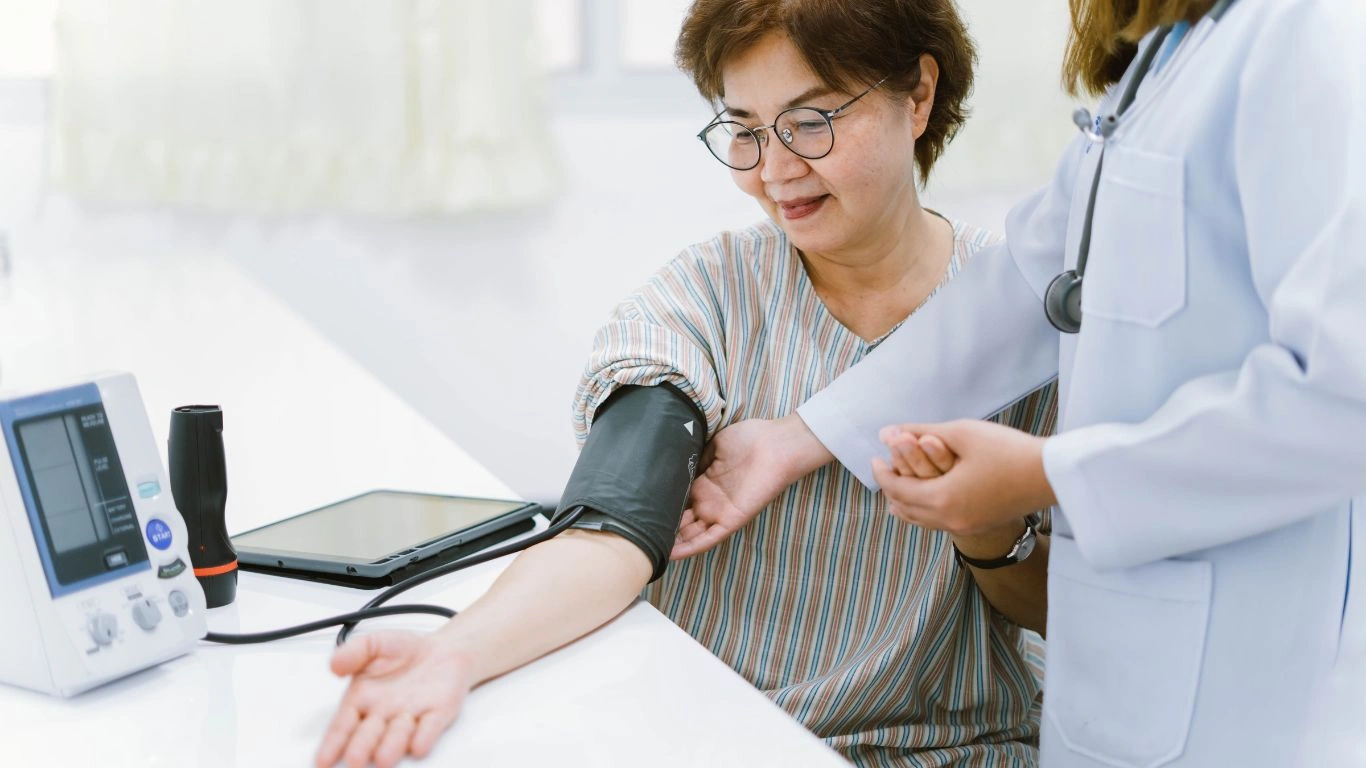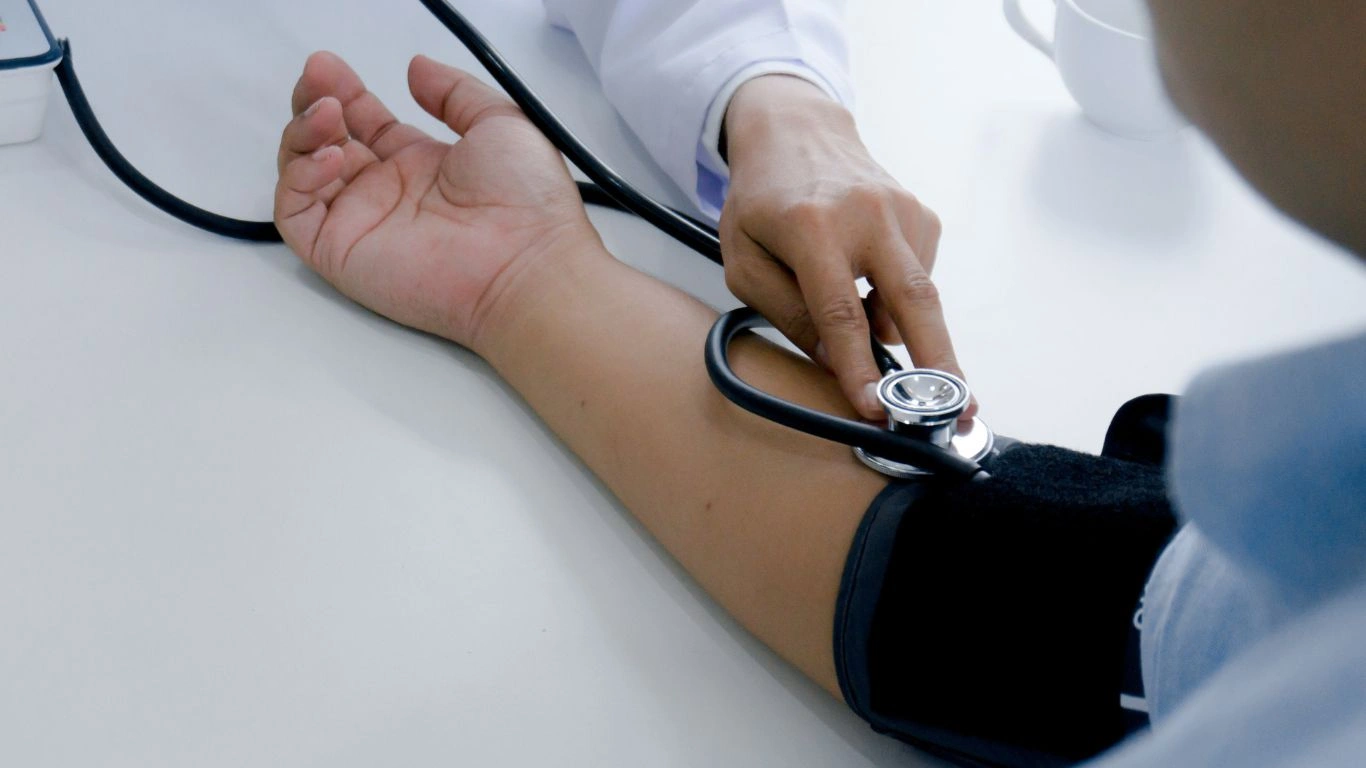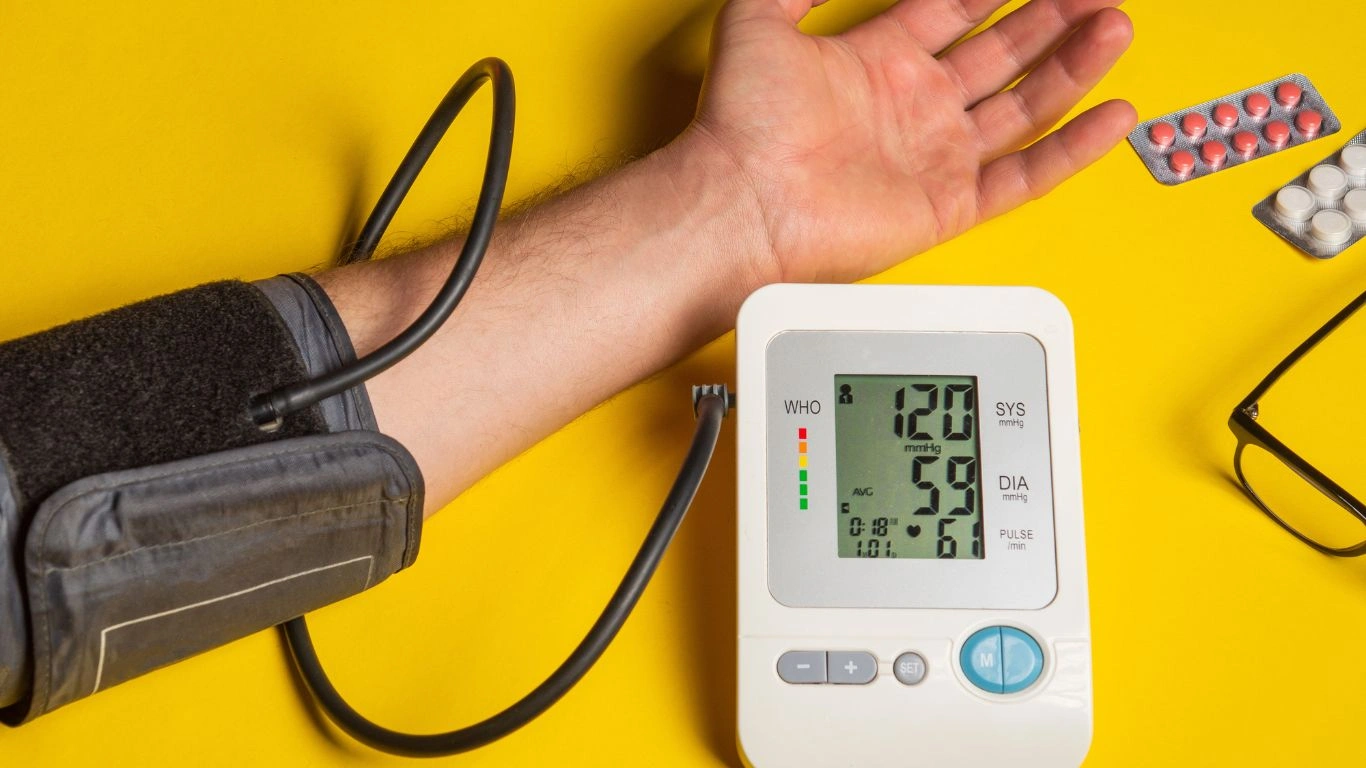Top 10 Best Stress Relief Gadgets for Hypertension to Lower Blood Pressure
As a practicing internal medicine physician specializing in hypertension management, I often see patients struggling not only with the physiological aspects of high blood pressure but also with the stress that comes with it. Stress is a major contributor to hypertension, and managing it effectively can make all the difference in controlling blood pressure. In today’s tech-driven world, we have a variety of tools at our fingertips to help combat stress, especially when dealing with hypertension. One of the most exciting developments in this area is the emergence of stress relief gadgets. These gadgets are designed to promote relaxation, reduce anxiety, and, ultimately, support your hypertension management plan. In this article, we will explore some of the best stress relief gadgets for hypertension, offering insight into how these devices can assist in lowering your stress levels and improving your health. From simple handheld devices to advanced technology, there’s something for everyone.
The Link Between Stress and Hypertension: Why Stress Relief Matters
Before we dive into the best stress relief gadgets, it’s important to understand the connection between stress and hypertension. As someone who works with hypertension patients on a daily basis, I can tell you firsthand how big of an impact stress can have on your blood pressure. When you’re stressed, your body releases stress hormones like adrenaline and cortisol, which can cause your heart rate to increase and blood vessels to constrict. This puts extra strain on your cardiovascular system and can lead to an increase in blood pressure. Over time, chronic stress can contribute to the development of hypertension and can make it harder to manage your condition if you’re already diagnosed.
That’s why managing stress is a crucial part of any hypertension management plan. It’s not just about medication; it’s also about lifestyle changes, including finding ways to relax, unwind, and relieve stress regularly. Fortunately, there are now a variety of gadgets that can help you with this, making it easier than ever to incorporate stress-relief techniques into your daily routine. Let’s take a look at some of the best stress relief gadgets for hypertension, so you can start incorporating them into your life today.
Best Stress Relief Gadgets for Hypertension
1. Wearable Relaxation Devices

Wearable relaxation devices are one of the most popular types of stress relief gadgets on the market today. These devices are designed to help you relax and reduce stress through gentle vibrations, breathing exercises, or even biofeedback mechanisms. They’re perfect for those who have a busy lifestyle and need to de-stress on the go. One example that has been gaining traction is the relaxation ring, which uses gentle vibrations to guide you through breathing exercises aimed at reducing your stress levels.
As someone who’s always looking for ways to manage my own stress during hectic days, I find these devices incredibly helpful. I’ve recommended them to my patients who often report feeling calmer after using them for just a few minutes. In fact, the act of focusing on deep breathing while using a wearable device can trigger the body’s natural relaxation response, lowering heart rate and reducing blood pressure.
2. Guided Meditation Headsets

If you’re someone who struggles with meditation or simply doesn’t know where to start, a guided meditation headset can be a game-changer. These devices are designed to provide audio and visual cues to help you focus and calm your mind. Most of these headsets work by using brainwave entrainment, which is a technique that synchronizes the frequency of your brainwaves to a particular pattern, promoting relaxation.
Personally, I’ve found these devices to be quite effective in not just lowering stress but also in improving overall well-being. Some of my patients have found them to be a great alternative to traditional meditation, especially if they find it difficult to quiet their minds. By simply wearing the headset and following the guided sessions, they experience significant stress reduction, which, in turn, helps control their blood pressure.
3. Stress-Relief Massage Devices

Another great gadget to help with stress relief is a handheld massage device. These devices use vibration, heat, or kneading motions to provide a therapeutic massage experience. Whether it’s for your neck, shoulders, or lower back, these devices can target muscle tension that may be exacerbating your stress levels. Muscle tension is common among those who are stressed, and releasing that tension can have an immediate impact on your overall sense of relaxation.
Personally, I’ve found that using a handheld massage device after a long day can do wonders for reducing both physical and mental stress. It’s a simple way to release tension and promote relaxation without needing to visit a spa or therapist. For patients dealing with hypertension, reducing physical tension is especially beneficial since it helps to relax the body, which can have a direct impact on blood pressure.
4. Breathing Exercise Gadgets
Breathing exercises are one of the most effective and simplest ways to reduce stress. However, it can sometimes be difficult to remember to practice them or to know if you’re doing them correctly. This is where breathing exercise gadgets come in. These devices typically use a visual or audio cue to guide you through slow, deep breaths to help calm your nervous system.
One of the most popular gadgets in this category is the breathing pacer, which uses a simple light or sound to guide you through each breath. You follow the cues, inhaling and exhaling at the right pace, helping you to quickly lower your stress levels. From my experience, these devices can be incredibly helpful for patients with hypertension who struggle with stress-induced spikes in blood pressure. A few minutes of guided breathing can help to lower your heart rate and blood pressure, making it an excellent addition to any stress-management routine.
5. Aromatherapy Diffusers
Aromatherapy is another powerful tool for stress relief, and aromatherapy diffusers are one of the easiest ways to introduce this calming practice into your daily life. These diffusers use essential oils like lavender, chamomile, and eucalyptus to create a relaxing atmosphere in your home or office. Many studies have shown that certain scents can help lower blood pressure, reduce anxiety, and promote overall well-being.
Personally, I love using aromatherapy diffusers in my practice, especially when I’m working with patients who are anxious about their blood pressure. The calming effects of aromatherapy combined with other relaxation techniques can significantly improve their overall experience and help them manage stress more effectively. This is an excellent option for those who want a more holistic approach to stress relief and hypertension management.
How to Choose the Right Stress Relief Gadget for Hypertension
With so many stress relief gadgets on the market, it can feel overwhelming to figure out which one is right for you, especially when you’re managing hypertension. Having tried several devices myself and recommended many to my patients, I can tell you that there’s no one-size-fits-all solution. The best device for you will depend on a number of factors, such as your lifestyle, stress triggers, and personal preferences. Here are a few tips to help you choose the right gadget for your hypertension management:
Consider Your Stress Triggers
Before investing in any stress relief gadget, it’s important to think about what causes you stress in the first place. Do you get stressed from physical tension, like tight shoulders or neck pain? Or is your stress more mental, stemming from anxiety and overthinking? If physical tension is your main trigger, a stress-relief massage device or wearable relaxation gadget might be the right choice for you. On the other hand, if anxiety and mental stress are more of an issue, a guided meditation headset or breathing exercise gadget may be more helpful in calming your mind.
Look for Features That Fit Your Routine
Some stress relief gadgets are designed to be used for just a few minutes throughout the day, while others require a longer commitment. For example, if you’re always on the go and need something quick and portable, a handheld massage device or a small, wearable gadget could be ideal. But if you have time to sit down and focus, you might prefer a guided meditation headset or an aromatherapy diffuser, which may require more of your time to fully experience the benefits.
For me personally, I love gadgets that allow me to multitask. I have a lot going on throughout my day, so I prefer devices that can give me relief during short breaks—something I can use while answering emails or reading a book. Finding a gadget that fits into your routine is key to making it work for you in the long run.
Set a Budget
Stress-relief gadgets vary widely in price, from affordable options under $50 to high-end devices that can cost several hundred dollars. The good news is that you don’t necessarily need to break the bank to find a quality gadget that can help with hypertension management. There are many affordable options, like breathing pacers and small handheld massagers, that still offer great benefits. If you’re just getting started with stress relief gadgets, it might be worth experimenting with a more affordable option before investing in something more expensive.
Look for Gadgets That Offer Data Tracking
Some of the more advanced stress relief gadgets come with features that track your stress levels and offer insights into how your body is responding. These gadgets can be especially useful for people managing hypertension, as they allow you to monitor your progress over time. For example, some relaxation wearables will monitor your heart rate or skin conductivity, providing real-time feedback about how your stress is affecting your body.
Personally, I’ve found these types of devices really interesting because they allow you to visually see the impact of your stress relief efforts. By tracking your data, you can learn which methods work best for you and make adjustments as needed. For my patients, I’ve seen how helpful this data can be when it comes to reinforcing healthy habits and improving hypertension management.
Additional Stress Relief Tips for Hypertension Management
While gadgets can certainly help with stress relief, they should be viewed as part of a comprehensive approach to hypertension management. As someone who focuses on hypertension every day, I can’t emphasize enough the importance of combining stress-relief gadgets with other lifestyle modifications to improve your overall health. Here are a few additional tips to keep in mind when managing hypertension and reducing stress:
Regular Exercise is Key
Exercise is one of the most effective ways to reduce stress and lower blood pressure. It doesn’t have to be intense; even a daily walk can make a huge difference. I’ve recommended regular exercise to almost every patient with hypertension, and I can tell you from personal experience that it’s one of the best stress-busters out there. When you exercise, your body releases endorphins—those feel-good chemicals that help reduce stress and improve mood. Additionally, regular physical activity helps improve your cardiovascular health, which is essential for managing hypertension in the long run.
Mindfulness and Meditation
If you’re not already practicing mindfulness or meditation, I highly encourage you to give it a try. These techniques can help you manage stress by teaching you how to focus on the present moment rather than worrying about the future. You don’t need to be a seasoned meditator to reap the benefits—just a few minutes of deep breathing or mindfulness exercises each day can help lower your stress levels and keep your blood pressure in check.
As I mentioned earlier, gadgets like guided meditation headsets can be a great way to get started with meditation, but remember that the practice itself is what’s important. Try to set aside a few minutes each day to practice mindfulness, even if you don’t have a device to guide you. It’s all about consistency and finding what works for you.
Healthy Diet and Proper Sleep
A balanced diet and quality sleep are also essential for managing stress and hypertension. Eating a diet rich in fruits, vegetables, whole grains, and lean proteins helps support your overall health, including your heart health. Foods rich in potassium, like bananas and spinach, can also help reduce the impact of sodium on blood pressure. Additionally, reducing your intake of processed foods and caffeine can make a big difference in how you feel day-to-day.
Sleep is just as important. Poor sleep can increase stress levels and contribute to higher blood pressure. Try to aim for 7-9 hours of sleep each night and practice good sleep hygiene. This might mean limiting screen time before bed, creating a calming bedtime routine, or using relaxation techniques to help you wind down at the end of the day.
Tech-Savvy Stress Relief Devices for the Modern Age

The world of stress relief gadgets has evolved beyond the traditional handheld massagers or basic aromatherapy diffusers. Now, we’re seeing advanced tech devices that combine multiple stress-reducing techniques into one seamless experience. From gadgets that combine sound therapy and light therapy to those that sync with your smartphone to track your stress levels, the possibilities are endless. As technology continues to advance, it’s exciting to think about how these new devices will make managing hypertension even easier.
One standout device in this category is the smart stress relief system, which combines a series of biofeedback sensors with a mobile app to help you manage stress in real-time. The device provides gentle vibrations, soothing sounds, and guided breathing exercises all in one package. It’s like having your very own stress management coach right in your pocket. I’ve seen firsthand how these devices can be especially beneficial for my patients who are tech-savvy and looking for more personalized solutions to manage their hypertension and stress.
The Future of Stress Relief Gadgets for Hypertension
As the technology behind stress relief gadgets continues to advance, I’m excited to see what the future holds. New devices that combine artificial intelligence, biofeedback, and even virtual reality are already on the horizon. In the near future, we might have gadgets that can not only help reduce stress but also predict stress spikes and offer immediate solutions to prevent blood pressure from rising. As a physician who is passionate about patient care, I can’t wait to see how these innovations can enhance hypertension management and improve the lives of those living with this condition.

Incorporating these new stress-relief gadgets into your life might take some trial and error, but the payoff is worth it. By combining the best stress relief gadgets with lifestyle changes, mindfulness, and a healthy diet, you can take control of your hypertension and your stress levels in a way that’s both manageable and sustainable.
Integrating Stress Relief Gadgets into Your Daily Hypertension Management Routine

Now that we’ve discussed some of the best stress relief gadgets for hypertension and how to choose the right one for your needs, it’s time to talk about how to integrate these tools into your daily routine effectively. As someone who spends a lot of time working with hypertension patients, I know that making lasting lifestyle changes can be tough. It’s one thing to buy a gadget, but it’s another to consistently use it in a way that’s actually going to benefit your health. In this section, we’ll discuss practical ways to incorporate stress-relief gadgets into your day-to-day life and ensure that they’re working to help manage your blood pressure.
Start Small and Build a Routine
When it comes to adding stress-relief gadgets to your routine, the key is to start small. Incorporating new habits can feel overwhelming, especially if you’re already managing other health conditions, but it doesn’t have to be a complicated process. Start by setting aside just five to ten minutes a day to use your new gadget. Whether it’s a wearable device that helps you practice deep breathing or a portable massager that targets areas of tension, even a short session can have a positive impact on your stress levels.
Over time, as you get used to using the gadget, you can gradually increase the time spent on these activities. I’ve found that setting a specific time of day to use your gadget can help you stay consistent. For example, you might use a meditation headset first thing in the morning to start your day with calm, or use a handheld massager during your lunch break to alleviate mid-day stress. The more consistent you are, the more likely you are to see results in reducing your stress and managing your blood pressure.
Combine Gadgets with Other Hypertension-Friendly Practices
While stress-relief gadgets are incredibly helpful, they shouldn’t be relied upon as the sole method for managing hypertension. The best approach is one that combines gadgets with other lifestyle changes that support heart health. As I mentioned in previous sections, regular physical activity, a balanced diet, and adequate sleep are all essential components of hypertension management. When you integrate gadgets with these habits, you create a holistic approach that helps lower blood pressure and reduce stress more effectively.
For instance, if you’re using a stress-relief gadget like a guided meditation headset, try to combine it with a brisk walk or light exercise afterward. Exercise helps to reduce stress hormones and lower blood pressure, and pairing it with meditation or relaxation techniques can create a powerful synergy. This combination can lead to even better stress relief than using the gadget alone.
Monitor Your Progress and Adjust as Needed
As with any health-related tool, it’s important to monitor your progress and make adjustments as needed. Many modern stress-relief gadgets, such as wearable devices, come with tracking features that can provide insights into how your body is responding to stress-reduction techniques. Some gadgets track your heart rate, skin conductivity, or even your sleep patterns, giving you valuable feedback on how well you’re managing your stress and hypertension.
Personally, I find that keeping a journal or using an app to track your use of these gadgets can be incredibly useful. Write down how you feel before and after each session and pay attention to any changes in your stress levels or blood pressure. This will help you identify which devices and techniques are the most effective for you. Don’t be discouraged if something doesn’t work right away; adjusting your approach is part of the process. Over time, you’ll discover what works best for your unique needs.
Exploring More Advanced Stress Relief Gadgets for Hypertension

While we’ve covered some of the more accessible and popular stress-relief gadgets in this article, there’s also a whole new world of advanced technologies designed to help with hypertension and stress management. As a physician who’s always keeping an eye on the latest trends in healthcare, I’m excited about some of the cutting-edge devices that are hitting the market. These devices are using new technologies like biofeedback, artificial intelligence, and even virtual reality to provide even more personalized and effective stress relief solutions.
Biofeedback Devices
Biofeedback is an exciting field that has gained significant attention in recent years. Biofeedback devices are designed to help you become more aware of your body’s physiological responses to stress, such as heart rate and muscle tension. By using these devices, you can learn to control these responses, which can lead to significant reductions in stress and blood pressure.
Some biofeedback devices come in the form of wearables, while others are more sophisticated, using sensors that you attach to different parts of your body. The idea is simple: the device gives you real-time feedback on your stress levels, and you can use relaxation techniques, such as deep breathing or visualization, to bring those levels down. In clinical studies, biofeedback has shown promising results in helping individuals manage their hypertension by teaching them to regulate their stress responses more effectively. If you’re looking for a more high-tech solution, biofeedback devices may be worth considering.
Virtual Reality Stress Relief
Virtual reality (VR) has recently started to make its way into the world of stress management. VR technology immerses you in a virtual environment designed to promote relaxation and reduce anxiety. Some VR programs are specifically designed to help lower blood pressure and reduce stress by guiding you through calming visual and auditory experiences. Whether it’s a guided meditation in a serene forest or a calming breathing exercise in a virtual space, VR can help take your mind off daily stressors and promote relaxation.
While VR devices are still a bit of an investment, I’ve seen some patients benefit from using them, especially those who struggle with traditional relaxation methods. The immersive experience provided by VR can help you disconnect from the outside world and truly focus on your stress-relief techniques, making it an excellent tool for managing hypertension.
References
Disclaimer
The information in this article is for educational purposes only and should not be considered medical advice. If you are managing hypertension or any other health condition, please consult with a healthcare provider before using any stress-relief gadgets or making changes to your current treatment plan. This article does not endorse any specific product or device. Always do your research and choose what works best for your individual needs. If you experience any adverse reactions or discomfort while using a gadget, discontinue use and seek medical advice promptly.

Dr. Gwenna Aazee is a board-certified Internal Medicine Physician with a special focus on hypertension management, chronic disease prevention, and patient education. With years of experience in both clinical practice and medical writing, she’s passionate about turning evidence-based medicine into accessible, actionable advice. Through her work at Healthusias.com, Dr. Aazee empowers readers to take charge of their health with confidence and clarity. Off the clock, she enjoys deep dives into nutrition research, long walks with her rescue pup, and simplifying medical jargon one article at a time.






